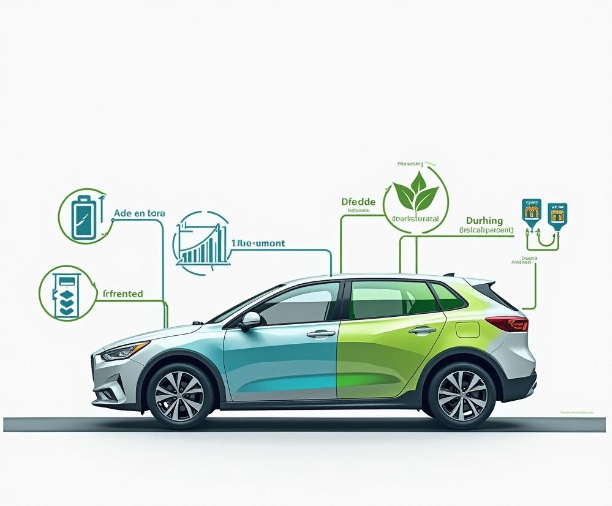Battery Industry Application Development Solutions
- latest articles
- 1.DApp Development & Customization: Merging Diverse Market Needs with User Experience 2.Analysis of the Core Technical System in DApp Project Development 3.How to achieve cross-chain interoperability in Web3 projects? 4.How does the tokenization of points reconstruct the e-commerce ecosystem? 5.How to Set and Track Data Metrics for a Points Mall? 6.What is DApp Development? Core Concepts and Technical Analysis 7.Inventory of commonly used Web3 development tools and usage tips 8.Development of a Distribution System Integrated with Social E-commerce 9.Six Key Steps for Businesses to Build a Points Mall System 10.What is DApp Development? A Comprehensive Guide from Concept to Implementation
- Popular Articles
- 1.Future Trends and Technology Predictions for APP Development in 2025 2.Analysis of the DeFi Ecosystem: How Developers Can Participate in Decentralized Finance Innovation 3.From Zero to One: How PI Mall Revolutionizes the Traditional E-commerce Model 4.DAPP Development | Best Practices for Professional Customization and Rapid Launch 5.Recommended by the Web3 developer community: the most noteworthy forums and resources 6.From Cloud Computing to Computing Power Leasing: Building a Flexible and Scalable Computing Resource Platform 7.How to Develop a Successful Douyin Mini Program: Technical Architecture and Best Practices 8.Shared Bike System APP: The Convenient Choice in the Era of Smart Travel 9.How to Create a Successful Dating App: From Needs Analysis to User Experience Design 10.From Design to Development: The Complete Process of Bringing an APP Idea to Life
With the transformation of the global energy structure and the increasing awareness of environmental protection, the battery industry is playing an increasingly important role in modern society. Whether in new energy vehicles, energy storage systems, or consumer electronics, batteries, as key devices for energy storage and supply, are driving continuous technological innovation and expanding applications. This article will explore application development solutions in the battery industry, covering the current state of battery technology development, challenges, and specific industry application cases, aiming to provide ideas and references for enterprises and researchers engaged in battery-related development.
I. The Rapid Development of Battery Technology
Battery technology has undergone several generations of transformation. The earliest lead-acid batteries are still widely used in areas such as automotive starting and backup power, but their low energy density and limited lifespan restrict their application in emerging fields. With breakthroughs in lithium-ion battery technology, particularly in energy density, charging efficiency, and lifespan, lithium-ion batteries have gradually become the mainstream in the market. In recent years, the rise of solid-state batteries, sodium-ion batteries, and other new battery technologies has further advanced the technological progress of the battery industry.
Currently, the technological development directions of the battery industry mainly focus on the following aspects:
1. High Energy Density: Increasing the energy density of batteries allows them to store more electrical energy without increasing volume and weight, extending device usage time or vehicle range.
2. Fast Charging Technology: With breakthroughs in fast charging technology, more and more batteries can be charged in a short time, meeting modern consumers' demand for a fast charging experience.
3. Long Lifespan: Extending battery lifespan and reducing replacement frequency are key to improving the cost-effectiveness of battery products and consumer satisfaction.
4. Safety: Enhancing battery safety to avoid phenomena such as overcharging, over-discharging, and short circuits that could lead to thermal runaway is one of the core challenges in battery technology.

II. Challenges in the Battery Industry
Despite significant advancements in battery technology, the battery industry still faces multiple challenges in its application process.
1. Raw Material Supply Issues
Key raw materials for batteries, such as lithium, cobalt, and nickel, face supply constraints and price fluctuations. In particular, the mining and processing of lithium resources are under dual pressures of environmental protection and sustainable development. Achieving efficient utilization and recycling of resources has become a critical issue for the development of the battery industry.
2. Recycling and Environmental Protection
Battery waste and recycling issues are environmental problems that the battery industry urgently needs to address. Especially against the backdrop of the rapid development of new energy vehicles, the disposal and recycling of used batteries have become a focus of societal and governmental attention. Establishing a comprehensive battery recycling system to avoid resource waste and environmental pollution has become a key topic in the battery industry.
3. Cost Control
Although battery technology is gradually maturing, the production cost of batteries remains high, especially in new energy vehicles and energy storage systems, where battery packs account for a significant portion of the overall cost. Reducing battery costs through technological innovation and production process optimization remains a bottleneck in the industry's development.
4. Performance Stability
Performance degradation of batteries during long-term use remains an issue, particularly under high temperatures or extreme conditions, where battery performance may be affected. Ensuring long-term stability and high performance of batteries to maximize their utility in various application scenarios is a key focus of technological research and development.
III. Main Application Areas of the Battery Industry
With the continuous advancement of battery technology, the application areas of batteries have gradually expanded, covering various fields from consumer electronics to new energy and smart grids. Below are some of the main battery application areas and their development solutions.
1. New Energy Vehicles (NEV)
As one of the largest application markets for batteries, particularly in the electric vehicle (EV) sector, the development of battery technology directly determines vehicle range, charging speed, and safety.
Battery Technology Solutions: To meet the demands of new energy vehicles, battery developers typically use lithium-ion batteries as the primary power source. To extend range, high-energy-density batteries such as lithium iron phosphate (LFP) and nickel-cobalt-manganese (NCM) batteries are employed. Optimizing battery pack design enhances the energy density and safety of battery modules.
Fast Charging Technology: To improve user experience, new energy vehicles need to support fast charging technology, enabling vehicles to charge quickly. Developing high-power and high-stability charging technologies is a key direction in current battery development.
Battery Management System (BMS): To ensure battery safety and extend lifespan, the Battery Management System (BMS) is crucial. The BMS can monitor battery status in real-time, preventing issues such as overcharging, over-discharging, and overheating, thereby ensuring the long-term stable operation of batteries in vehicles.

2. Energy Storage Systems
With the rapid development of renewable energy sources such as solar and wind power, the application of batteries in the energy storage field is becoming increasingly important. Battery energy storage systems can effectively address the intermittency and volatility of renewable energy, enabling balanced energy distribution.
System Design and Optimization: For energy storage projects of different scales, developing efficient and safe battery systems is essential. In large-scale energy storage systems, designing an efficient Energy Management System (EMS) to regulate the charging and discharging processes of battery modules is critical for ensuring grid stability.
Large-Scale Energy Storage Technology: With increasing energy storage demands, large-scale energy storage technologies such as flow batteries and sodium-ion batteries have emerged. Flow batteries are particularly suitable for large-scale energy storage projects because they can provide stable discharge over long periods and expand storage capacity by increasing the volume of electrolyte.
3. Consumer Electronics
In consumer electronics such as smartphones, laptops, drones, and wearable devices, batteries are one of the core components. With the proliferation of these devices and continuous technological advancements, the performance requirements for batteries are becoming increasingly stringent.
Miniaturization and High Energy Density: In consumer electronics, batteries need to meet requirements for miniaturization, long battery life, and high energy density. Therefore, lithium-ion and solid-state batteries have become mainstream technologies. Additionally, charging speed and cycle life are key concerns for consumers.
Wireless Charging and Intelligent Management: With the development of wireless charging technology, more and more consumer electronics are beginning to support wireless charging. At the same time, intelligent battery management systems are widely used to ensure charging safety and efficiency.
4. Smart Grids
As a modern energy management system, smart grids rely on efficient battery energy storage solutions to achieve dynamic power dispatch. Through real-time monitoring and intelligent management, smart grids can effectively improve power utilization efficiency and reduce energy waste.
Integration and Application of Energy Storage Technology: In smart grids, battery energy storage can be used to balance power supply and demand, prevent grid overload, and enhance the reliability and flexibility of the power system. Lithium-ion and sodium-ion batteries show promising application prospects in this field.
IV. Future Outlook
The future development of battery technology will place greater emphasis on high efficiency, long lifespan, safety, and environmental friendliness. At the same time, with the further advancement of technologies such as artificial intelligence, big data, and the Internet of Things, battery management and applications will become more intelligent and refined. The battery industry will develop in a more efficient, environmentally friendly, and sustainable direction, opening up more application scenarios.
In summary, application development in the battery industry is a field full of opportunities and challenges. Through continuous technological innovation and solution optimization, the battery industry will play an increasingly important role in various fields such as new energy, energy storage systems, and consumer electronics, making positive contributions to the sustainable development of society.
-

How to Use App Development to Boost Conversion Rates on E-commerce Platforms
With the widespread adoption of smartphones and the rapid development of mobile ···
-

How APP Development Facilitates Digital Transformation and Innovation
With the rapid advancement of information technology, digital transformation has···
-

App Store Optimization and SEO Strategies in App Development
In today's rapidly evolving mobile internet landscape, apps have become essentia···

 Blockchain
Blockchain










